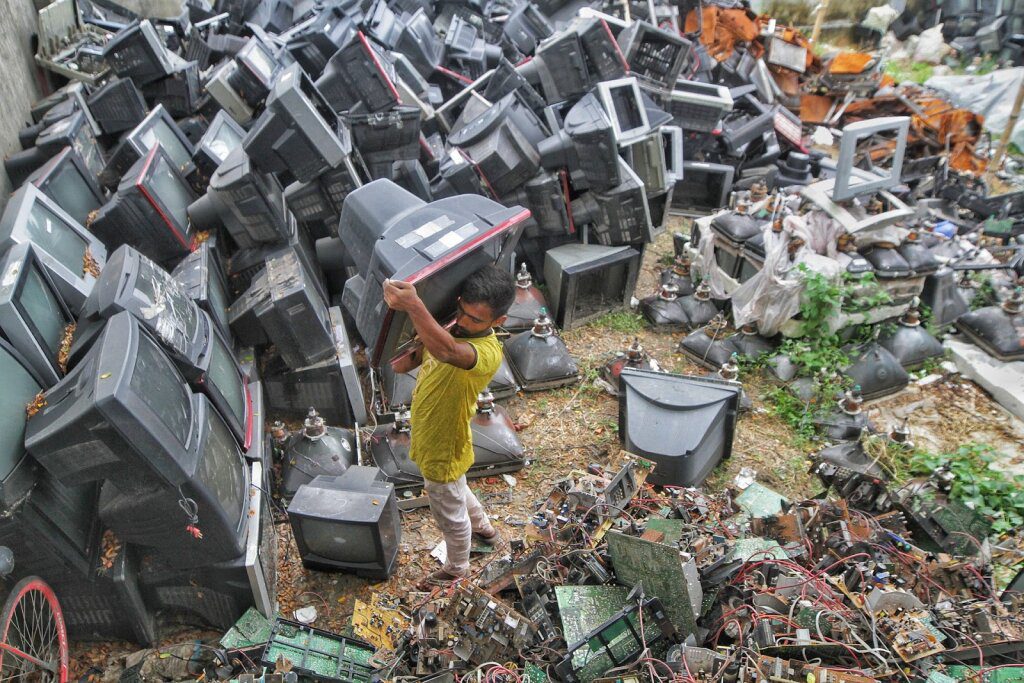Change starts slowly but rapidly progresses forward. In 1975, only 3% of American households had microwaves, but that percentage surged to 82.2% by 1992. Computers in homes between 1992 and 2003 went from 20.7% to 63.1%, and cell phones went from 10% to 87.2% between 1994 and 2010.
Over the past 50 years, the U.S. has seen a massive increase in the use of electronics. New technologies, products, and inventions are inevitable, and so is the rise of electronic waste (e-waste) recycling and management.
While not as dazzling as electric vehicles (EVs) or as interesting as cutting-edge biotech startups, the e-waste industry is a sleeping giant. According to Spherical Insights & Consulting, the global e-waste management market was worth about $52 billion in 2021, and that number is expected to reach $145 billion by 2030.
Global committees, government agencies, and other regulatory bodies are starting to fixate on the full spectrum of supply chain emissions, like the trash from electronics. In addition, a large portion of it contains valuable minerals and materials like gold, silver, and palladium. The writing is on the wall: the e-waste industry holds a massive opportunity for innovation and disruption.

E-waste is “electronic products that are unwanted, not working, and nearing or at the end of their ‘useful life.’” Common products include microwaves, cell phones, laptops, TVs, copiers, video game consoles, and remote controls.
While many of these discarded electronics sit in unlabeled boxes in basements and garages, waste and electronic equipment are the fastest-growing waste stream in the world. Since only 17% is properly collected and recycled, a huge amount ends up in landfills and other improper waste sites.
Global e-waste contains roughly $60 billion worth of raw materials, which means 83% of that $60 billion (~$50 billion) is being dumped in landfills and incinerated at waste-burning centers. With its combination of monetary incentives and environmental benefits, these companies and partnerships are part of the pack rushing into the industry.

Circular Electronics Partnership (CEP)
Cisco, Dell, Google, and other tech companies partnered to launch the Circular Electronics Partnership (CEP). It was the first major global collaborative effort in the electronics industry to focus on solving the e-waste problem. Peter Bakker, president and CEO of the World Business Council and Sustainable Development (WBCSD), talked about the need to create the CEP.
“Electronics are omnipresent. Far beyond just computers, monitors, and phones, electronics are commonly found in everything from clothing to toys,” Bakker said. “As applications scale, they should be circular in design, production, use, and recovery to create a nature, climate, and people positive value chain.”
Redwood Materials
Redwood Materials is taking a different approach than collaborative partnerships: it recently received a $2 billion loan to build a new battery recycling facility in Nevada. Redwood was founded in 2017 by JB Straubel, the former co-founder and chief technology officer at Tesla. As the EV industry ramps up production, battery recycling will have to scale rapidly to meet demand.
“The U.S. battery demand and EV demand is growing … but we have a long way before that supply chain is predominantly moved to the U.S.,” Straubel said to CNBC.

Rubicon
Rubicon, a certified B-Corp in the zero-waste field, is taking a systematic, business-oriented approach to e-waste. “I think it’s accurate to say that waste is a design flaw. If you’re producing a lot of waste, there is something not functioning efficiently inside your organization,” explains Nate Morris, Rubicon CEO, in an interview with Forbes.
The company partners with governments and businesses to reduce their electronic waste by analyzing all aspects of the business, from supply chain logistics to business operations and even software and energy use.
E-waste will continue to grow as innovations go to market. When the iPhone came out, who could have predicted the future release of Airpods? Keep an eye on the industry. As waste increases, so will the number of governments, companies, and people working toward solutions to combat it.





